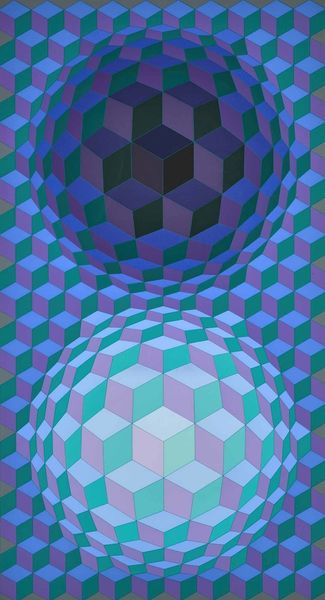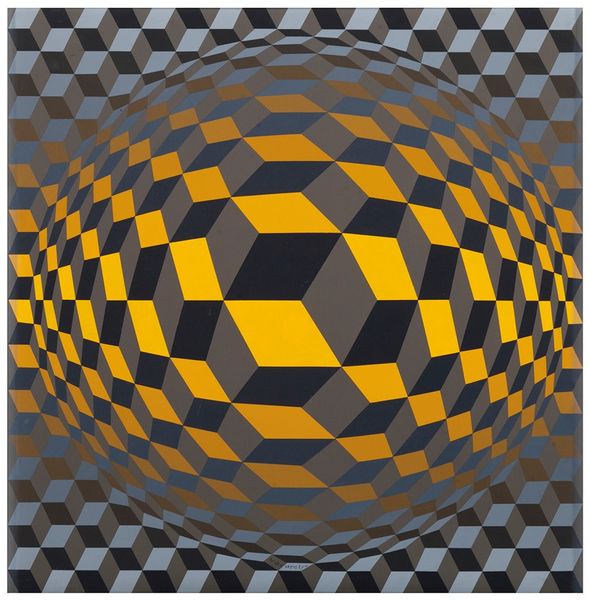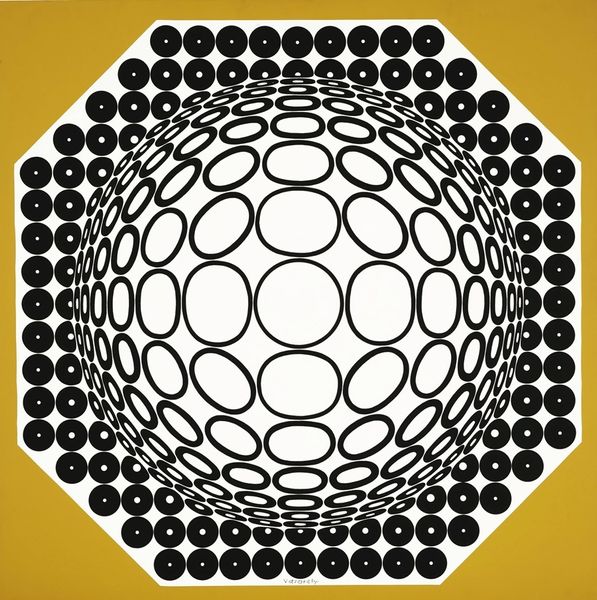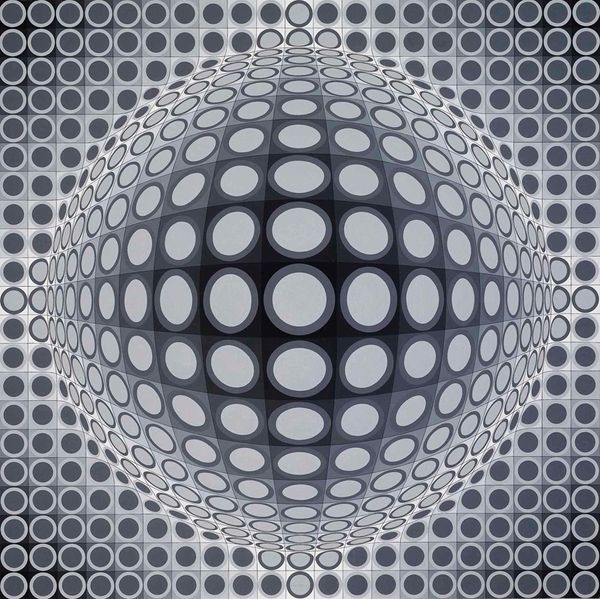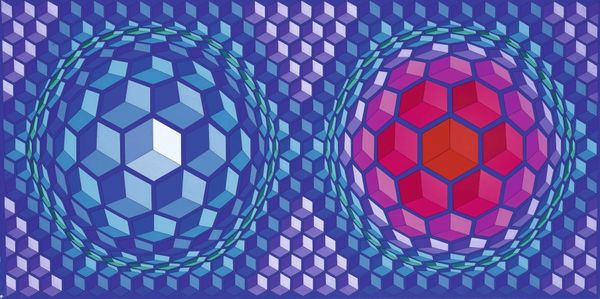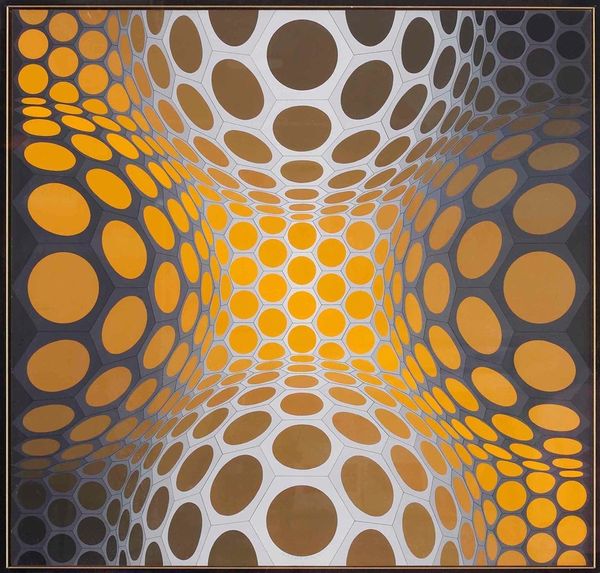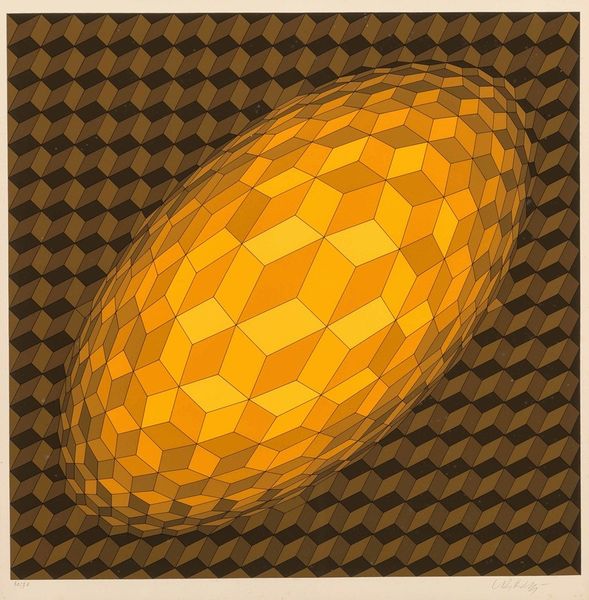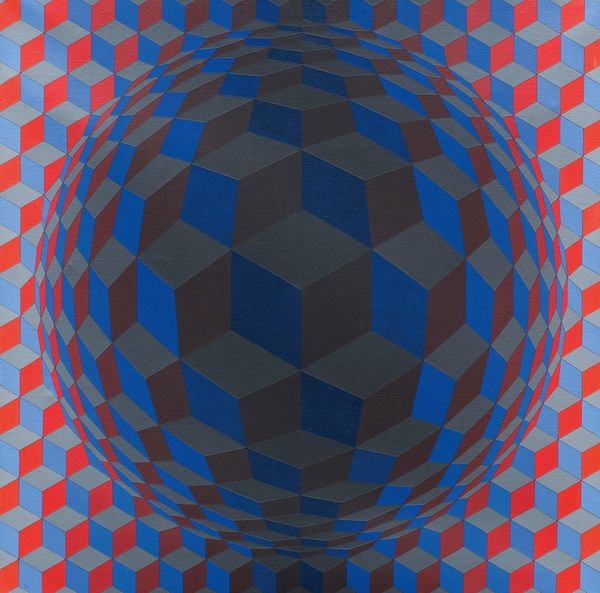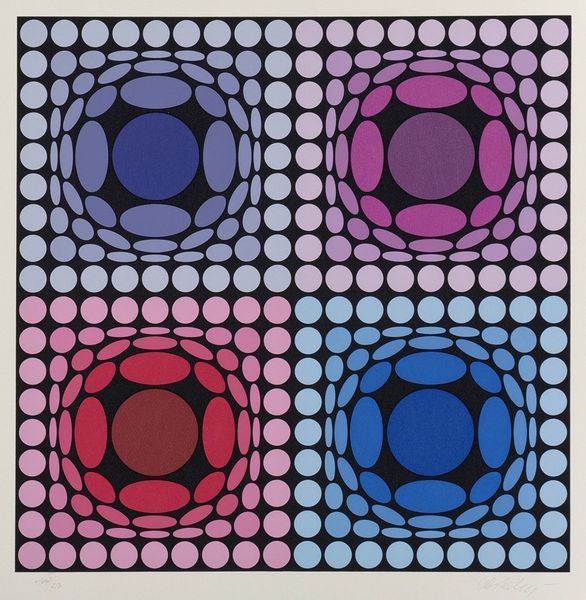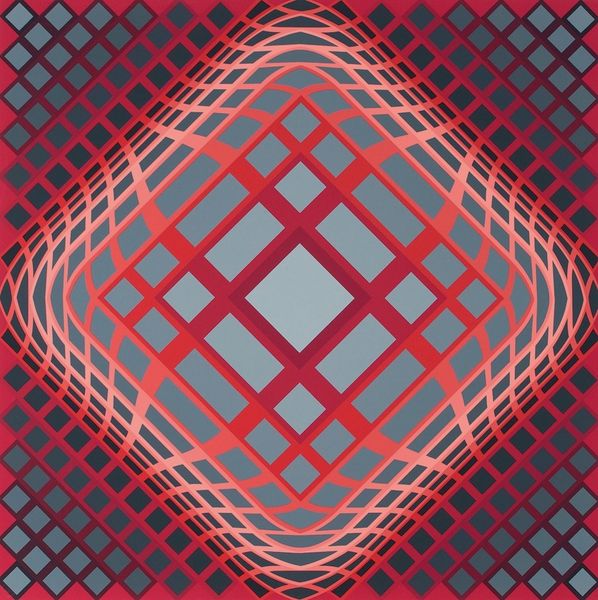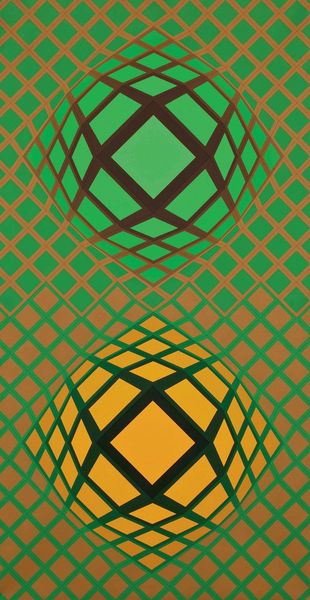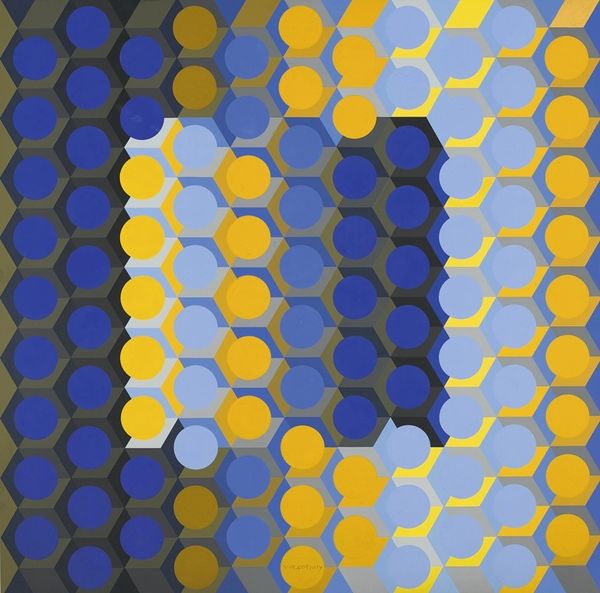
#
op-art
#
abstract
#
geometric pattern
#
geometric
#
geometric-abstraction
#
modernism
Copyright: Modern Artists: Artvee
Curator: Before us hangs "Meta #3," an Op-Art piece realized by Victor Vasarely in 1976. The artist plays with perception using geometric forms. What's your initial reaction to its imagery? Editor: Visually arresting! It feels like staring into an infinite digital honeycomb. There's something hypnotic about the way the spheres bulge out; almost unnerving, as if the canvas is alive. Curator: Indeed, Vasarely, a key figure in Op Art, aimed to activate the viewer’s gaze, challenging conventional viewing habits. He was quite interested in democratizing art; believing that it should be accessible to everyone and integrate with daily life. Editor: This pattern language speaks of interconnectedness. Honeycombs, with their hexagonal geometry, have become synonymous with efficiency and community, found echoing through industrial design and science itself. Do you see parallels between the social commentary of the time and this symbol? Curator: That is certainly up for debate. Given Vasarely's philosophy, I wonder if this resonates more deeply within the context of Post-War art and architecture. It could symbolize the drive toward rationalization in urban planning, but with this golden "lining" attempting to elevate it, and escape pure utility, and lean into transcendence. Editor: I hadn’t considered that! The shimmering gold does introduce an almost Byzantine sense of sacred geometry. Perhaps these spheres also evoke cellular structures; the very building blocks of life rendered in this mathematically precise style. Curator: You've highlighted an intriguing point: perhaps the symbol invites contemplation beyond mere industrial society! The artist’s goal wasn’t always explicit commentary. Sometimes the exploration of visual perception held inherent value. Editor: Right. Symbols work because they resonate unconsciously, whether by societal coding or even intrinsic structure in our psyche. Whether reflecting societal drive or simply captivating in its visual play, "Meta #3" certainly triggers questions, I like it more now than at first glance! Curator: Absolutely! Vasarely aimed to shift paradigms. To encourage viewers to move beyond passively observing art to actively engage with it, question its basis and impact. Hopefully we encouraged our audience to do just that. Editor: An inspiring goal for art! As a symbol hunter I leave this experience having broadened my range and understanding; that's my personal sign that it's worked.
Comments
No comments
Be the first to comment and join the conversation on the ultimate creative platform.
